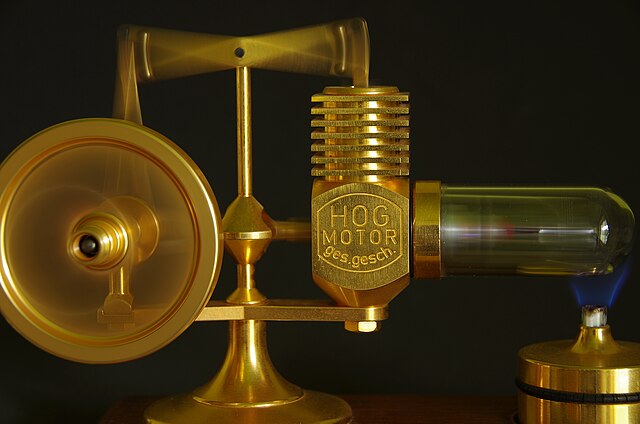A Stirling engine is a heat engine that is operated by the cyclic expansion and contraction of air or other gas by exposing it to different temperatures, resulting in a net conversion of heat energy to mechanical work.
A model of a Stirling engine showing its simplicity. Unlike the steam engine or internal combustion engine, it has no valves or timing train. The heat source (not shown) would be placed under the brass cylinder.
A typical late nineteenth/early twentieth-century water-pumping engine by the Rider-Ericsson Engine Company
Philips MP1002CA Stirling generator of 1951
Stirling engine running
For fluid power, a working fluid is a gas or liquid that primarily transfers force, motion, or mechanical energy. In hydraulics, water or hydraulic fluid transfers force between hydraulic components such as hydraulic pumps, hydraulic cylinders, and hydraulic motors that are assembled into hydraulic machinery, hydraulic drive systems, etc. In pneumatics, the working fluid is air or another gas which transfers force between pneumatic components such as compressors, vacuum pumps, pneumatic cylinders, and pneumatic motors. In pneumatic systems, the working gas also stores energy because it is compressible.
Work input on a working fluid by means of a cylinder–piston arrangement





